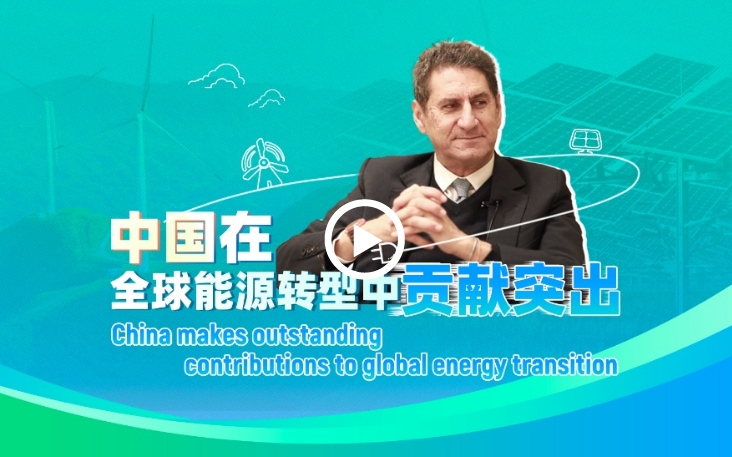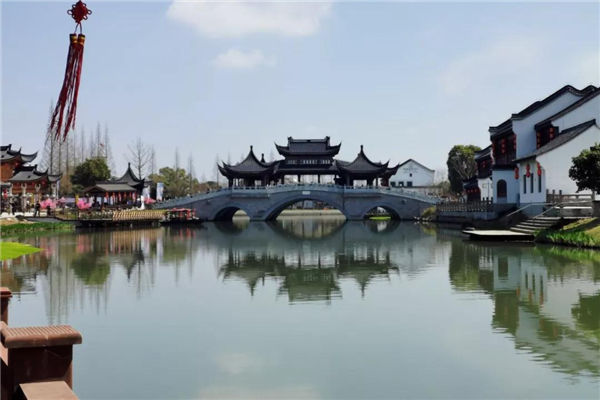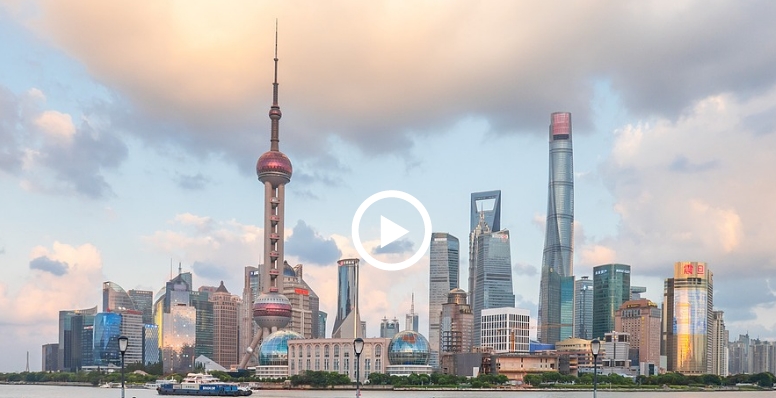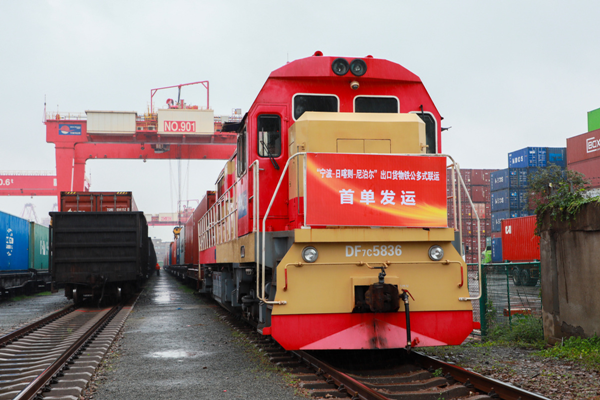Bustling scenes at Ningbo Zhoushan Port offer snapshot of BRI's feat in past decade

A view of the Dapukou terminal at the Ningbo Zhoushan Port, East China's Zhejiang Province on January 17, 2023 Photo: Li Hao/GT
The dropping of the anchor marks the arrival of a cargo ship at the Dapukou terminal at the Ningbo Zhoushan Port, the world's largest port in East China's Zhejiang Province. After several workers skillfully moored the vessel, trucks and bridge cranes immediately swing into action, loading containers onto the ship before it embarks on a long journey overseas.
Most of the ships arriving at this port sail to and from countries along the Belt and Road Initiative (BRI). As the economic and trade exchanges between China and these countries have deepened over the years, the busy scene at this port has become the norm.
So far, there is a total of 29 international container routes at the Dapukou terminal at the Ningbo Zhoushan Port catered to the BRI, connecting 46 major ports in 29 countries and regions in Africa, the Mediterranean, and Eurasia. Later this week, a new route to Russia will be launched, marking the first new BRI route in 2023 amid booming demand, according to a statement that Zhoushan port customs sent to the Global Times on Tuesday.
Such busy scenes and expanding routes at Dapukou is a microcosm of the rapid development of the BRI. Thanks to the joint construction of the BRI over the past decade, trade between China and countries along the BRI route has increased in capacity and strength.
From 2013 to 2022, the average annual growth rate of imports and exports between China and BRI countries reached 8.6 percent. In 2022 alone, trade continued to maintain rapid growth, hitting a high of 13.83 trillion yuan, an increase of 19.4 percent year-on-year, which is 11.7 percentage points higher than the overall growth rate in China's foreign trade, according to the General Administration of Customs.
As the BRI marks its 10th anniversary this year, ports, traders, and government officials in Zhejiang are all gearing up for a new start by diversifying trade connectivity and exploring complementary partnerships, as China emerges out of the COVID-19 epidemic, with a foreseeable economic rebound, industry insiders and officials said.
New start, higher goals
"More investment and trade expansions are expected from China to Europe, the Middle East, and Central Asia, countries along the BRI in 2023," Ding Yandong, general manager of Rollmax shutter component Co, a large roller shutter component producer based in Ningbo, told the Global Times.
As a long-time participant in international trade, Ding has been doing business with partners mostly from BRI countries for many years, and as fruits borne through the win-win and sustainable cooperation are seen, he plans to focus more on this area not only by closely following the government's call to expand trade, but also by seizing on greater opportunities in booming markets.
That means more advertising, more exhibition participation, and chartered flights to some of these countries where the Chinese-made value-for-money products are highly complementary to local market demands, while the untapped resources of these countries can be better explored and utilized through financial and technological support from China, industry insiders said.
Early this week, less than a week before the Chinese Spring Festival, Ding's schedule was full, as he worked to ship numerous containers of commodities, mostly smart home windows and doors made in local factories, to countries in Europe and the Middle East.
Chinese-made goods have competitive advantages in the region due to the complete end-to-end supply chain where Ningbo, the major transportation and production center in East China, holds both production and transportation advantages, Ding said.
"We can make and send our product sample to our clients in a month, while other producers in Southeast Asia often take at least 2-3 months," Ding said.
In order to keep pace, Ding has placed more emphasis on innovation and upgrading the automation rate on the production line.
Speaking of 10th anniversary of the BRI, Ding said that with the obvious advantages of China's manufacturing industry, "we are willing to participate in this kind of big historical event and the direction of policy guidance."
Gu Weijun, general manager of Ningbo Huamao International Trading Co, another Ningbo-based trader, told the Global Times that countries such as Germany, Russia, and Poland are among her company's major target markets. She is currently preparing to participate in exhibitions in these countries in 2023, as China's reopening is expected to aid in the expansion of partner bases.
"From the perspective of the national strategy, we also feel that we are more inclined toward Europe for the important factors in the BRI," Gu said. In Europe, Gu is leaning more about Poland, a country she sees as a potential booming distribution center between the East and the West, after Hungary.
From the governmental level, more policies are also being focused on countries and regions along the BRI route.
For example, in terms of encouraging local companies to go abroad to participate in exhibitions, it means that more attention should be paid to exhibitions involving countries along the BRI, and more financial support should be extended, Fei Jianming, director of the foreign trade promotion division of the Ningbo Municipal Bureau of Commerce, told the Global Times.
"We will send 100 delegations to participate in overseas exhibitions in 2023 of which 60 are emerging market countries along the BRI, and 40 are traditional or developed countries," Fei said.
Based on the policy dividend from the BRI and potential opportunities available in booming markets along the BRI, Gu felt more confident in following through with the formulated plan. "We may be able to achieve an increase of more than 15 percent in annual business volume annually," Gu said.
More investment is also being considered into Asian countries such as Indonesia, a major BRI country, which exports more than half of all the coal it produces. "We are investing in Indonesia, including by building a plant there for making corrugated paper - a fast-developing industry in the region," Gu said.
Greater connectivity
Moreover, the Ningbo Zhoushan port has enabled business people like Ding and his foreign clients to build stronger ties, with diversified trade routes by giving full play its advantages as a major trade port with the largest cargo handling capacity in the world.
As it actively participates in the development of the BRI, the port's international cooperation continues to expand, together with an investment layout and its trade routes. The Ningbo Zhoushan Port has signed strategic cooperation agreements with port parks in countries such as Spain and Dubai.
Docking with important China-Europe freight train nodes in central and western China, the number of sea-rail intermodal trains in the port has increased to 23, with an annual business volume of over 1.4 million TEUs.
As the port deepens international routes and shipping business cooperation, serving domestic and foreign enterprises, the port's total number of container routes has increased to a historic 300, of which BRI routes reached 120, according to a statement sent by Ningbo Zhoushan Port Co to the Global Times on Wednesday. More BRI routes are expected in 2023.
Ports are the frontier of an open economy and an important fulcrum for the construction of the BRI. Participating in the joint construction of the BRI has brought about an increase in the international influence of the Ningbo Zhoushan Port.
A survey conducted by China's Ministry of Transport on December 28, 2022 found the port led in scale, intensive and efficient shoreline utilization levels, and global shipping networks as compared to other Chinese ports and is among the first-class ports globally.
"Next, we will further optimize the international route structure, accelerate the overseas layout, continue to expand the scale and efficiency of sea-rail combined transport, and expand the China-Europe freight train transportation channel," the company said.

 China makes outstanding contributions to global energy transition
China makes outstanding contributions to global energy transition  Ningbo village inspires Malawi official
Ningbo village inspires Malawi official  A look at China's economic data in the first three quarters of 2024
A look at China's economic data in the first three quarters of 2024 


